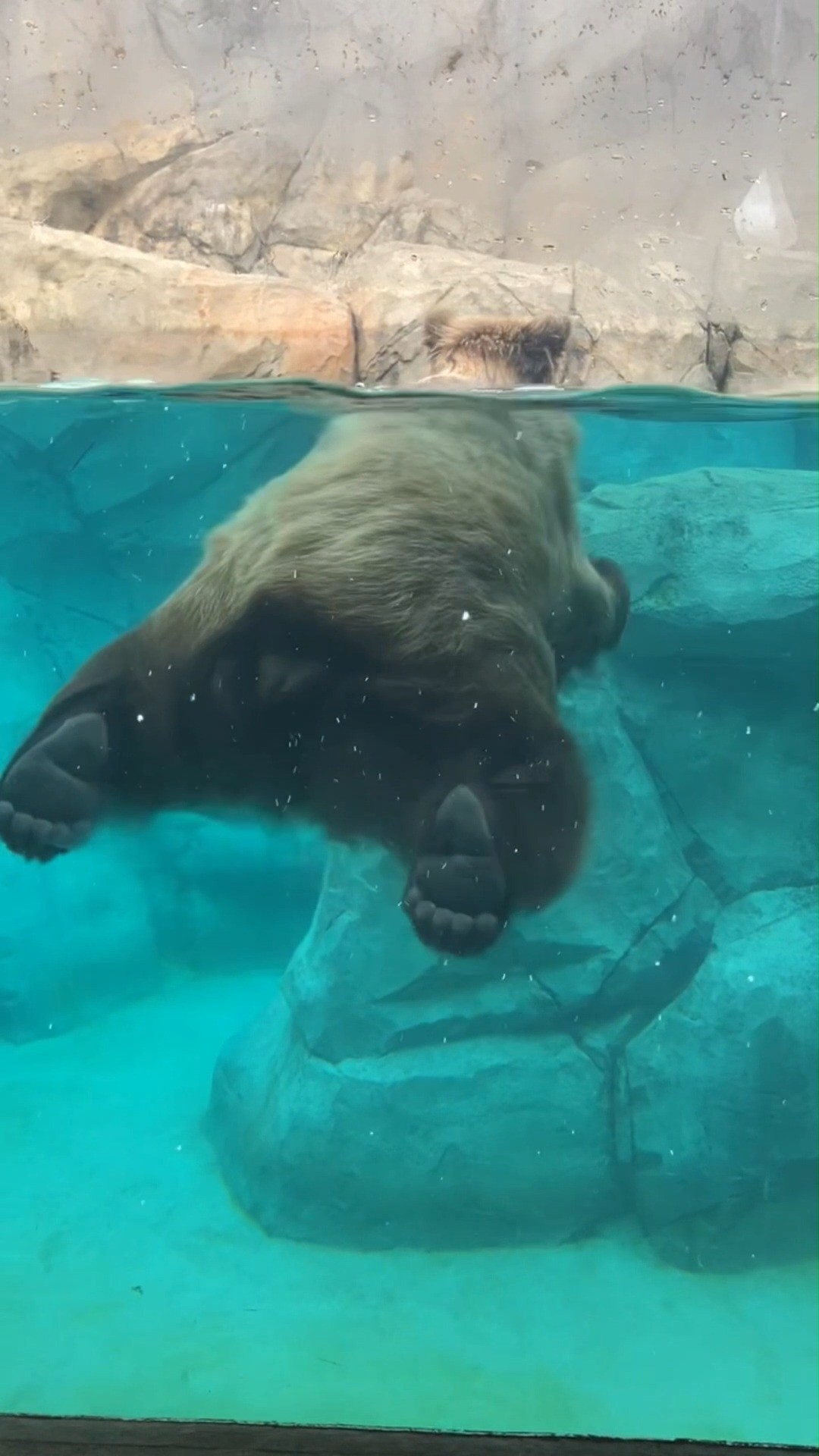- Brown Bear Habitat and Behavior
- Importance of Enrichment Activities
- Conservation and Educational Impact
- Health and Wellness Monitoring
- Visitor Engagement at Zoos
Brown Bear Habitat and Behavior
Tim, the brown bear, is a captivating subject for zoologists and animal lovers alike. Brown bears (Ursus arctos) are among the largest land-dwelling mammals. They are typically found in North America, Europe, and Asia. In the wild, they are often associated with dense forests, tundra, and alpine regions. These habitats provide them with abundant resources such as food, shelter, and breeding grounds. Tim’s habitat at the zoo mimics these natural environments closely, featuring pools, dense vegetation, and rocky terrains to encourage natural behaviors.
Brown bears are omnivores with a diverse diet that ranges from berries and nuts to fish and small mammals. Their strong limbs, sharp claws, and powerful jaws are adaptations for foraging and hunting. Swimming is a natural behavior for brown bears, utilized primarily for catching fish and cooling down during warm weather. Tim’s swimming session in his enclosure is indicative of these natural instincts, showcasing his powerful swimming abilities and his playful nature while ensuring his physical fitness.
Importance of Enrichment Activities
Enrichment activities are vital in zoo settings to maintain the physical and mental well-being of animals. These activities are designed to encourage natural behaviors and stimulate the animals’ senses. For Tim, swimming provides excellent physical exercise and mental stimulation. Not only does it help keep him fit, but it also allows him to engage in behaviors he would exhibit in the wild, such as hunting and cooling off.
Enrichment activities can take many forms, ranging from interactive toys and puzzles to environmental modifications that challenge and engage zoo animals. For bears like Tim, these activities might include introducing new scents, varying terrain, or offering novel objects to investigate. This approach is critical in preventing stereotypic behaviors—repetitive, unnatural behavior patterns that can develop in captive animals due to boredom or frustration.
Conservation and Educational Impact
Zoos play a significant role in the conservation of species and educate the public about wildlife and the importance of biodiversity. Tim’s presence at the zoo serves as an ambassador for his wild counterparts, highlighting the need for conservation efforts in the wild. Brown bears face numerous threats, including habitat loss, human-wildlife conflict, and climate change. Through Tim, visitors learn about these challenges and the measures taken to safeguard these majestic creatures.
Educational programs and interactive exhibits that feature animals like Tim foster a deeper understanding and appreciation for wildlife. These programs are often accompanied by additional information about the species’ natural history, conservation status, and efforts being made to protect them in the wild. Such initiatives not only educate but also inspire visitors to support and participate in conservation activities.
Health and Wellness Monitoring
Continuous health and wellness monitoring is crucial for animals in captivity. For Tim, regular veterinary check-ups are a part of his care routine at the zoo. This includes monitoring his diet, physical health, and behavioral changes. Swimming takes a central role in Tim’s wellness regimen, providing cardiovascular exercise and muscle conditioning.
Zookeepers and veterinarians work together to spot any signs of health issues early on. Tim’s swimming habits would be evaluated to ensure they’re contributing positively to his overall well-being. For example, water quality in the pool is routinely checked and maintained to prevent the spread of infections and diseases. Tim’s activity levels, appetite, and interactions with his environment are meticulously recorded and analyzed to detect any deviations from his normal patterns.
Visitor Engagement at Zoos
Zoos strive to create engaging and educational experiences for their visitors. Interactive exhibits, like the enclosure where Tim resides, are designed to not only display the animals but also to educate the audience about their natural behaviors and habitats. Tim’s swimming sessions are not only a testament to his intrinsic behaviors but also serve as an attraction that draws visitor attention.
Live demonstrations, informative signage, and guided tours enhance visitor engagement. Tim’s swimming activities can be an excellent opportunity for zookeepers to explain the importance of enrichment activities and the role of zoos in conservation efforts. Interactive experiences leave a lasting impression on visitors, encouraging them to think about wildlife conservation long after they leave the zoo.
Additionally, social media platforms have become a significant tool for engaging a wider audience. Videos and photos of Tim swimming can be shared online, reaching people who may not have the chance to visit the zoo in person. These digital interactions help spread awareness and generate support for conservation initiatives globally.
In conclusion, Tim taking a swim encapsulates a multitude of educational, conservation, and engagement elements. It highlights the natural behaviors and adaptations of brown bears, underscores the importance of enrichment activities in captive settings, and serves as a pedagogical tool for visitors. Most importantly, it draws attention to the pressing conservation issues facing wild populations, reminding us of the collective effort required to protect our planet’s biodiversity. Tim’s story is a powerful reminder of the possibilities when human care intersects with wildlife preservation, fostering a more profound connection to the animal kingdom.
*****
Source Description
Tim takes a swim!
Alt text: A video of brown bear Tim swimming inside his habitat.


